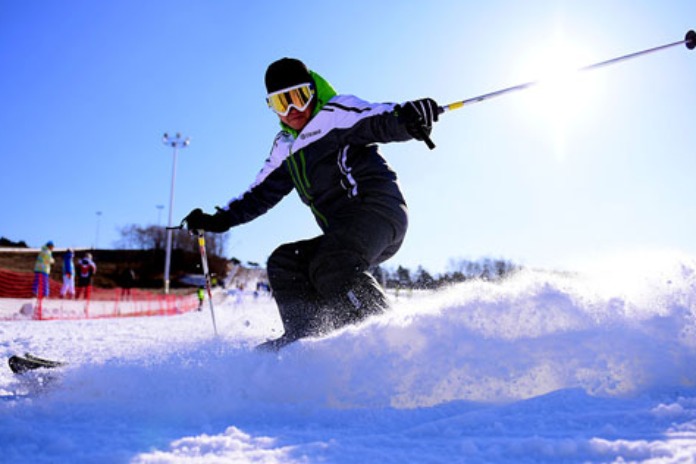Inside track on the great outdoors
New national guidelines show way forward for outdoor sports and recreation sector


New national guidelines show way forward for outdoor sports and recreation sector
Despite the lingering impact of the COVID-19 pandemic, the Chinese government remains bullish on the growth of outdoor sports and leisure activities with the sector's total output value expected to surpass 3 trillion yuan ($414 billion) by 2025.
Even with the hosting of major international sporting events still on hold due to the pandemic, the public's enthusiasm for outdoor sports in China continues to accelerate as the country's health-conscious middle classes embrace fitness as a fashionable lifestyle choice.
To better guide the development of the sector, the General Administration of Sport of China — with support and input from the country's economic planning, urban planning, natural resources administration, culture and tourism departments — has issued guidelines on the outdoor sports industry's development from 2022-25.
Published on Monday, the document elaborates on six major tasks, such as exploring more natural resources to accommodate outdoor sports projects, improving the layout of such projects, stimulating consumption and diversifying services, and making the outdoor sector a pillar of growth for the entire sports industry, which is projected to reach a total scale of 5 trillion yuan by 2025.
The guideline document is the first of its kind on a national level, and is a timely boost to the sector, which is in urgent need of scientific design, sustainable planning and safety regulations, experts reckon.
"From marathon running to cycling, skiing to hiking, Chinese people, especially urbanites, are increasingly interested in such exercises to not just keep fit but also as a social outlet," said Wang Xueli, director of Tsinghua University's Center for Development of the Sports Industry.
"Young people in particular are attracted to adventurous and vibrant outdoor sports — a trend propelled by social media," she added.
"However, the risky nature of such activities and the potential violation of environmental protection rules, by both individual enthusiasts and businesses in the sector, pose challenges which are addressed in the newly released guidelines."
Illustrating Wang's point is the recent boom in paddleboarding in Beijing's park lakes and urban waterways, such as the Liangma River in the city's downtown and the Wenyu River in the eastern suburbs.
Paddleboarding's popularity has spurred business opportunities in training and equipment rental, but also led to run-ins with urban management authorities and property regulators.
The guideline document is designed to avoid such disputes, with one of its core principles being "to open more natural resources, national parks and urban areas for outdoor exercise in an innovative way with environmental protection as a baseline". This strategy can help ensure safer and more organized outdoor activities, according to Zhou Lijun, a researcher with Zhejiang University.
"How to make the best use of all kinds of natural resources on condition of sufficient protection to accommodate outdoor sports is a challenging practice across the world," said Zhou, director of the National Sports Industry Research Center at the university.
"The guidelines will enlighten businesses and relevant authorities on working together to open up more space for outdoor sports while keeping their operations in check."
Inspired by the success of Beijing 2022, mass participation in skiing and snowboarding is expected to reach new heights this winter as several major mountain resorts around Beijing and its Games co-host Zhangjiakou, Hebei province, prepare to cash in on the Olympic legacy.
According to the guideline document, an outdoor sports and tourism belt based on winter sports consumption is being built from the country's northeastern border to the northwestern end, including Beijing and Hebei, with continuous investment in resort construction, equipment manufacturing, training and accommodation.
The development of winter sports facilities, which resulted in 346 million Chinese people participating in winter sports at least once by the opening of the Games in February, is projected to generate a total gross value of 1 trillion yuan by 2025, according to an industry report published in September.
"The potential of winter sports remains huge even with the skiing boom having already stormed across North China in recent years," said Li Xiaoming, a deputy director of the winter sports administration with Beijing Municipal Sports Bureau.
"The industry now needs regulation on business operation and safety measures more than ever. The national guideline document is a great help, but it's more important that businesses operate sustainably and responsibly."
Most Popular
- Athletes run toward best times in Beijing marathon
- ElShorbagy and Arnold claim 2024 PSA China Squash Open titles
- China sweeps 5 titles at WTT Contender Muscat
- 2025 Tour de France to be all-French affair
- Cavendish considers saddling up again
- U16s set new bar for the national program






























